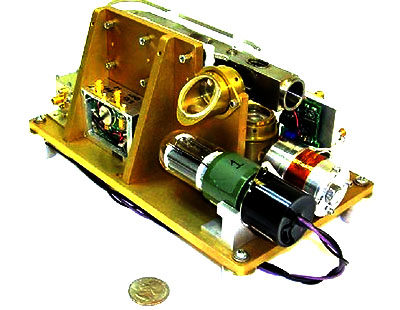News about maps
Digital cartography and GPS navigation
Mapstor news
This Day in History
Travelling with mapstor.com
Digital cartography and GPS navigation
115 years of flight
Next-generation of GPS satellites are headed to space
DJI Phantom 4 RTK - cartography of a new generation
Earthquake prediction systems
OneSoil map
New atomic clock and GPS to help in the development of outer space

The NASA agency prepares ultra-precise atomic clocks Deep Space Atomic Clock (DSAC) to be sent into space next year. After starting the clock throughout the year will run in demo mode, which will raise the technology to the next level for their subsequent use in the missions of varying complexity.
The demonstration unit
and a payload DSAC will be installed on the satellite, built by Surrey Satellite Technologies, which will be launched into space on board the launcher Space X Falcon 9 in the mission the US Air Force Space Test Program (STP) -2.
Watches demonstrate their functionality and suitability for traffic in one-way mode. The device uses GPS-satellite signals for precise orbit determination and confirmed its performance on short and long time frames.
DSAC is the ideal technology for deep space exploration. One of the missions that will be used by the atomic clock, will be flying to Mars, which requires accurate determination of the position to start the air brake when entering the atmosphere of the red planet.
Another task of the atomic clock DSAC, is a mission designed to confirm the existence and properties of the subsurface liquid ocean on Jupiter's moon Europa.
Project Deep Space Atomic Clock is sponsored by the Directorate of Space Technology NASA, and is responsible for project management Jet Propulsion Laboratory of the United States, located in Pasadena, California.
Digital cartography and GPS navigation 20-05-2015


